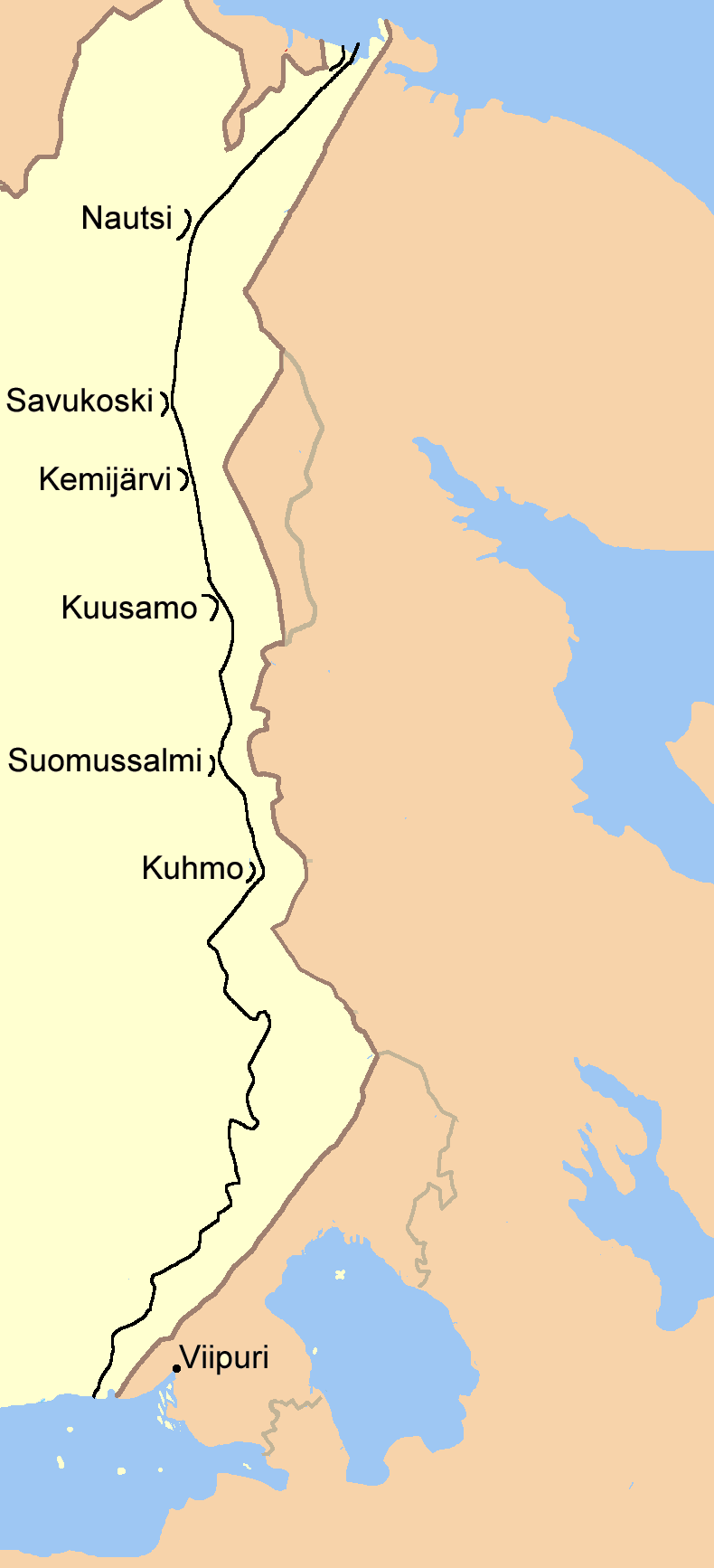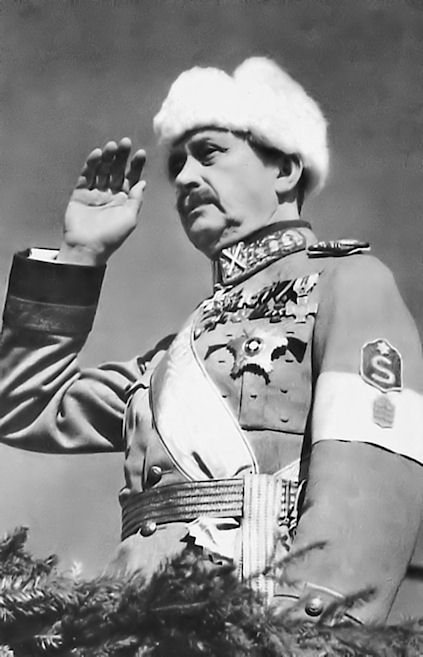|
VKT-line
The VKT-line or Viipuri–Kuparsaari–Taipale line ( fi, VKT-linja, sv, VKT-linjen) was a Finnish defensive line on Karelian Isthmus during the Continuation War, spanning from Viipuri (Vyborg) through Tali and Kuparsaari along the northern shore of Vuoksi River, Suvanto and Taipaleenjoki to Taipale on the western shore of Lake Ladoga, using natural benefits of the eastern part of the destroyed Mannerheim Line. See also * VT-line *Karelian Fortified Region *Salpa Line The Salpa Line ( fi, Salpalinja, literally ''Latch line''; sv, Salpalinjen), or its official name, Suomen Salpa (''Finland's Latch''), is a bunker line on the eastern border of Finland. It was built in 1940–1941 during the Interim Peace betwee ... {{Finnish castles Continuation War World War II defensive lines ... [...More Info...] [...Related Items...] OR: [Wikipedia] [Google] [Baidu] |
Salpa Line
The Salpa Line ( fi, Salpalinja, literally ''Latch line''; sv, Salpalinjen), or its official name, Suomen Salpa (''Finland's Latch''), is a bunker line on the eastern border of Finland. It was built in 1940–1941 during the Interim Peace between the Winter War and the Continuation War and further in 1944 to defend Finland against a possible Soviet invasion. The line is 1,200 kilometres long, stretching from the Gulf of Finland to Petsamo (now Pechenga, Russia). It never saw military action because the Soviet offensive in 1944 was stopped at the VKT-line on the Karelian Isthmus. The fortifications of the Salpa Line were significantly more complete and stronger than those of the Mannerheim Line.Reino Arimo, ''Suomen linnoittamisen historia 1918—1944'' (''The History of Finnish Fortification 1918—1944''), Otava, 1981, Construction The planning of the Salpa Line was commissioned by general Rudolf Walden and the construction began at the end of the Winter War in 1940. At f ... [...More Info...] [...Related Items...] OR: [Wikipedia] [Google] [Baidu] |
Karelian Isthmus
The Karelian Isthmus (russian: Карельский перешеек, Karelsky peresheyek; fi, Karjalankannas; sv, Karelska näset) is the approximately stretch of land, situated between the Gulf of Finland and Lake Ladoga in northwestern Russia, to the north of the River Neva. Its northwestern boundary is a line from the Bay of Vyborg to the westernmost point of Lake Ladoga, Pekonlahti. If the Karelian Isthmus is defined as the entire territory of present-day Saint Petersburg and Leningrad Oblast to the north of the Neva and also a tiny part of the Republic of Karelia, the area of the isthmus is about . The smaller part of the isthmus to the southeast of the old Russia-Finland border is considered historically as Northern Ingria, rather than part of the Karelian Isthmus itself. The rest of the isthmus was historically a part of Finnish Karelia. This was conquered by the Russian Empire during the Great Northern War in 1712 and included within the autonomous Grand Duchy of ... [...More Info...] [...Related Items...] OR: [Wikipedia] [Google] [Baidu] |
Continuation War
The Continuation War, also known as the Second Soviet-Finnish War, was a conflict fought by Finland and Nazi Germany against the Soviet Union from 1941 to 1944, as part of World War II.; sv, fortsättningskriget; german: Fortsetzungskrieg. According to Finnish historian Olli Vehviläinen, the term 'Continuation War' was created at the start of the conflict by the Finnish government, to justify the invasion to the population as a continuation of the defensive Winter War and separate from the German war effort. He titled the chapter addressing the issue in his book as "Finland's War of Retaliation". Vehviläinen asserted that the reality of that claim changed when the Finnish forces crossed the 1939 frontier and started annexation operations. The US Library of Congress catalogue also lists the variants War of Retribution and War of Continuation (see authority control)., group="Note" In Soviet historiography, the war was called the Finnish Front of the Great Patriotic War.. Alter ... [...More Info...] [...Related Items...] OR: [Wikipedia] [Google] [Baidu] |
Vuoksi River
The Vuoksi (russian: Вуокса, historically: "Uzerva"; fi, Vuoksi; sv, Vuoksen) is a river running through the northernmost part of the Karelian Isthmus from Lake Saimaa in southeastern Finland to Lake Ladoga in northwestern Russia. The river enters Lake Ladoga in three branches, an older main northern branch at Priozersk (Käkisalmi), a smaller branch a few kilometers to the north of it, and a new southern branch entering further southeast as Burnaya River (Finnish: Taipaleenjoki), which has become the main stream in terms of water discharge. Since 1857, the old northern distributaries drain only the lower reaches of the Vuoksi basin and are not fed by Lake Saimaa. The northern and southern branches actually belong to two separate river systems, which at times get isolated from each other in dry seasons. The descent between Lake Saimaa and Lake Ladoga is . The entire run of the river is via the Priozersk branch, or via the Taipale (Burnaya) branch. It has a drainage ba ... [...More Info...] [...Related Items...] OR: [Wikipedia] [Google] [Baidu] |
Mannerheim Line
The Mannerheim Line ( fi, Mannerheim-linja, sv, Mannerheimlinjen) was a defensive fortification line on the Karelian Isthmus built by Finland against the Soviet Union. While this was never an officially designated name, during the Winter War it became known as the Mannerheim Line, after Finnish Army's then commander-in-chief Field Marshal Baron Carl Gustaf Emil Mannerheim. The line was constructed in two phases: 1920–1924 and 1932–1939. By November 1939, when the Winter War began, the line was by no means complete. History of construction Background After the October Revolution in the Russian Empire, the Finns declared independence in 1917. Although the Soviet Union recognized Finland's independence, the Finns did not trust their sincerity. The relationship between the two countries deteriorated, with Soviet Russia supporting the Red Guard during the Finnish Civil War in 1918. After the victory of the White Guard, a group of Finnish communists fled to Soviet Russia and ... [...More Info...] [...Related Items...] OR: [Wikipedia] [Google] [Baidu] |
VT-line
The Vammelsuu–Taipale line ( fi, VT-linja; sv, VT-linjen; russian: Карельский вал) was a Finnish defensive line on the Karelian Isthmus built in 1942–1944 during the Continuation War and running from Vammelsuu on the northern shore of the Gulf of Finland through Kuuterselkä and Kivennapa and along Taipaleenjoki to Taipale on the western shore of Lake Ladoga. It crossed the Saint Petersburg–Vyborg railroad at Sahakylä (now 63rd km) and the Saint Petersburg–Hiitola railroad at Kelliö (now 69th km). See also * VKT-line * Karelian Fortified Region * Salpa Line The Salpa Line ( fi, Salpalinja, literally ''Latch line''; sv, Salpalinjen), or its official name, Suomen Salpa (''Finland's Latch''), is a bunker line on the eastern border of Finland. It was built in 1940–1941 during the Interim Peace betwee ... {{Finnish castles Continuation War World War II defensive lines ... [...More Info...] [...Related Items...] OR: [Wikipedia] [Google] [Baidu] |
Finland
Finland ( fi, Suomi ; sv, Finland ), officially the Republic of Finland (; ), is a Nordic country in Northern Europe. It shares land borders with Sweden to the northwest, Norway to the north, and Russia to the east, with the Gulf of Bothnia to the west and the Gulf of Finland across Estonia to the south. Finland covers an area of with a population of 5.6 million. Helsinki is the capital and largest city, forming a larger metropolitan area with the neighbouring cities of Espoo, Kauniainen, and Vantaa. The vast majority of the population are ethnic Finns. Finnish, alongside Swedish, are the official languages. Swedish is the native language of 5.2% of the population. Finland's climate varies from humid continental in the south to the boreal in the north. The land cover is primarily a boreal forest biome, with more than 180,000 recorded lakes. Finland was first inhabited around 9000 BC after the Last Glacial Period. The Stone Age introduced several differ ... [...More Info...] [...Related Items...] OR: [Wikipedia] [Google] [Baidu] |
Tali, Karelian Isthmus
Paltsevo (russian: Па́льцево; fi, Tali) is a rural locality on Karelian Isthmus, in Vyborgsky District of Leningrad Oblast, where the battle of Tali-Ihantala A battle is an occurrence of combat in warfare between opposing military units of any number or size. A war usually consists of multiple battles. In general, a battle is a military engagement that is well defined in duration, area, and force ... took place in 1944, and a station of the Vyborg-Joensuu railroad. Rural localities in Leningrad Oblast Karelian Isthmus {{LeningradOblast-geo-stub ... [...More Info...] [...Related Items...] OR: [Wikipedia] [Google] [Baidu] |
Kuparsaari
Zhdanovsky Island ( fi, Kuparsaari; russian: Ждановский остров) is a peninsula on Karelian Isthmus, along the southern shore of Vuoksi River The Vuoksi (russian: Вуокса, historically: "Uzerva"; fi, Vuoksi; sv, Vuoksen) is a river running through the northernmost part of the Karelian Isthmus from Lake Saimaa in southeastern Finland to Lake Ladoga in northwestern Russia. The r .... Karelian Isthmus {{LeningradOblast-geo-stub ... [...More Info...] [...Related Items...] OR: [Wikipedia] [Google] [Baidu] |
Lake Sukhodolskoye
Lake Sukhodolskoye (russian: Суходольское озеро; fi, Suvanto-järvi ) is a narrow 40 km long lake on the Karelian Isthmus located in Priozersky District of Leningrad Oblast, Russia. It is a part of the Vuoksi River basin, constituting its southern armlet, and drained by Burnaya River. Originally waters of the lake flowed into the Vuoksi through a waterway at Kiviniemi. However, in 1818 the channel that had been dug to drain spring flood waters from the lake into Lake Ladoga unexpectedly turned into Taipaleenjoki (Burnaya River), which started draining the lake itself and decreased its level by 7 m. The Kiviniemi waterway dried out. In 1857 a channel was dug there, but the stream reversed direction, revealed rapids and rendered navigation at Kiviniemi impossible. Since 1857 Lake Sukhodolskoye and Burnaya River have constituted the southern armlet of Vuoksi River, which has decreased the level of the original northern armlet flowing through Priozersk by 4 m. ... [...More Info...] [...Related Items...] OR: [Wikipedia] [Google] [Baidu] |




